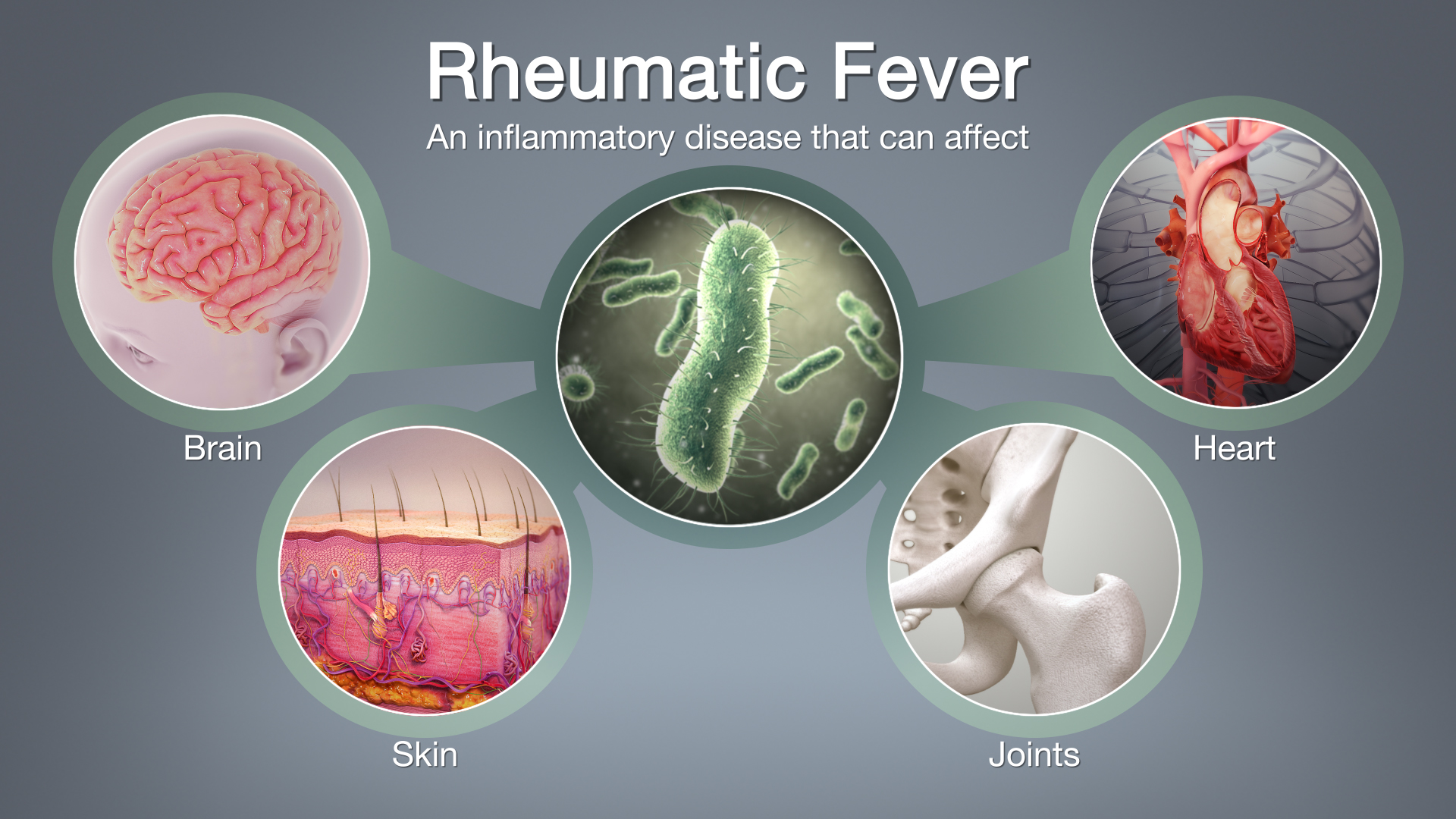What is rheumatic fever in children?

Overview
Untreated strep throat or scarlet fever can lead to the inflammatory condition known as rheumatic fever. A streptococcus (strep-toe-KOK-us) bacterial infection is what causes strep throat and scarlet fever.
Children aged 5 to 15 are most commonly affected by rheumatic fever. However, both adults and younger children can develop it. Rheumatic fever is uncommon in the United States and other affluent nations, although strep throat is frequently encountered.
Heart failure and heart valve damage brought on by rheumatic fever are both irreversible. Treatment can lessen inflammation-related damage, improve pain, and stop rheumatic fever from returning.
Symptoms
Rheumatic fever symptoms result from inflammation in the heart, joints, skin or central nervous system. There may be few symptoms or several. Symptoms can change during the course of the disease. The onset of rheumatic fever usually occurs about 2 to 4 weeks after a strep throat infection.
Rheumatic fever signs and symptoms can include:
- Fever
- Painful and tender joints — most often in the knees, ankles, elbows and wrists
- Pain in one joint that migrates to another joint
- Red, hot or swollen joints
- Chest pain
- Fatigue
- Flat or slightly raised, painless rash with a ragged edge
- Heart murmur
- Jerky, uncontrollable body movements (Sydenham chorea) — most often in the hands, feet and face
- Outbursts of unusual behavior, such as crying or inappropriate laughing, that accompanies Sydenham chorea
- Small, painless bumps beneath the skin
When to see a doctor
Make an appointment with your child's health care provider if any of these signs or symptoms of strep throat occur:
- Sore throat that comes on suddenly
- Pain when swallowing
- Fever
- Headache
- Stomach pain, nausea and vomiting


